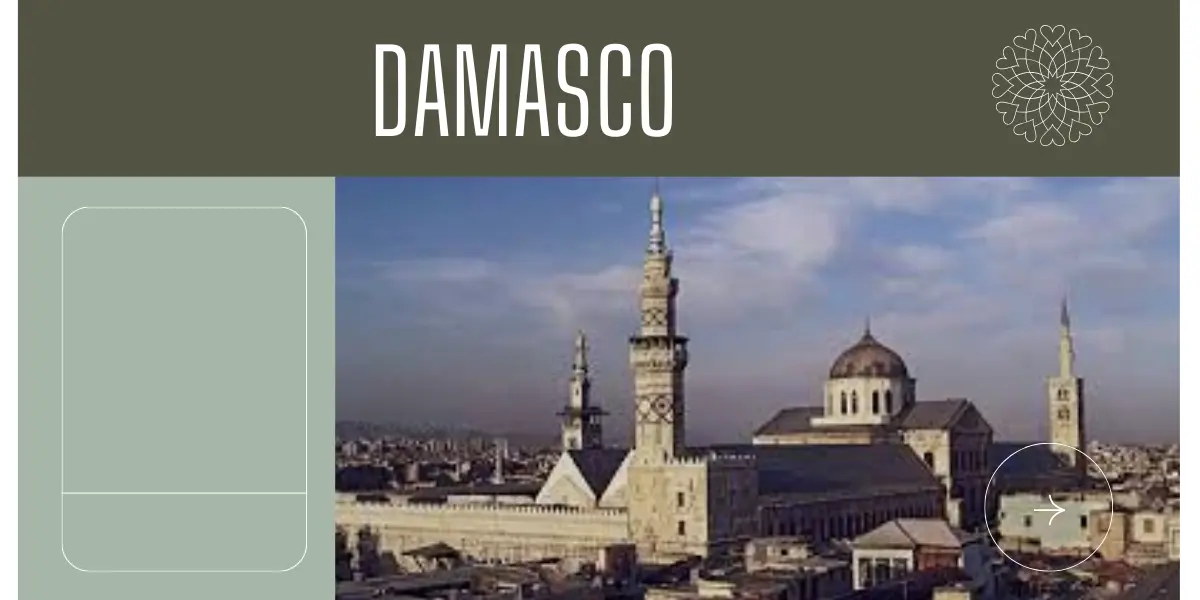Damasco, known to many as the ancient city of Damascus, holds a profound place in world history. As one of the oldest continuously inhabited cities, Damasco has been a focal point of culture, religion, and commerce for millennia. Located in modern-day Syria, it is a city where ancient traditions blend seamlessly with contemporary life. This article delves into the rich tapestry that is Damasco, exploring its historical significance, cultural heritage, and the pivotal role it continues to play in the region and beyond.
Historical Significance of Damasco
Ancient Origins and Early History
Damasco’s history dates back to ancient times, with archaeological evidence suggesting habitation as early as the 3rd millennium BC. It has been a coveted prize for many empires, including the Egyptians, Assyrians, Persians, Greeks, and Romans. Each of these civilizations left an indelible mark on the city, contributing to its diverse architectural and cultural heritage.
Key Historical Milestones:
- Egyptian Rule: Damasco was mentioned in the Amarna letters during the 14th century BC, highlighting its significance in regional politics.
- Assyrian and Persian Conquests: The city became an important administrative center under Assyrian and later Persian rule.
- Hellenistic Period: Following Alexander the Great’s conquest, Damasco thrived as a center of Hellenistic culture and trade.
- Roman Era: Under Roman control, the city saw significant infrastructural development, including roads, aqueducts, and temples.
Cultural Heritage of Damasco
Architectural Marvels
Damasco is renowned for its stunning architecture, which reflects its diverse historical influences. The city’s old town is a UNESCO World Heritage site, home to numerous ancient buildings, mosques, churches, and markets.
Notable Structures:
- Umayyad Mosque: One of the largest and oldest mosques in the world, it stands on the site of a Roman temple and a Christian basilica.
- Azem Palace: A beautiful example of Ottoman architecture, now a museum showcasing Damascene art and culture.
- Bab Touma (Thomas Gate): An iconic gate that leads to the Christian quarter, highlighting the city’s religious diversity.
Religious Significance
Damasco holds great religious importance for Muslims, Christians, and Jews. It is mentioned in the Bible and the Quran, and it is believed to be the site of significant events in religious history.
Religious Landmarks:
- Chapel of Saint Paul: Commemorating the conversion of Saint Paul on the road to Damascus.
- Mariamite Cathedral of Damascus: A key site for the Greek Orthodox Church of Antioch.
Damasco in the Modern Era
Cultural Revival and Modernization
In recent years, Damasco has witnessed a cultural revival, with efforts to preserve its rich heritage while embracing modernity. The city’s art scene is flourishing, with galleries, theaters, and cultural festivals celebrating both traditional and contemporary works.
Modern Developments:
- Cultural Festivals: Events like the Damascus International Fair and the Al Mahabba Festival draw artists and visitors from around the world.
- Economic Growth: Investments in infrastructure and tourism have revitalized the local economy, making Damasco a vibrant urban center.
Tourism and Hospitality
Damasco is a popular destination for tourists seeking to explore its historical and cultural treasures. The city’s hospitality sector has grown, offering a range of accommodations from traditional guesthouses to luxury hotels.
Tourist Attractions:
- Souq al-Hamidiyya: A bustling market where visitors can experience the vibrant local culture and shop for traditional crafts.
- Tekiyeh Suleimaniah: An Ottoman-era complex with a mosque, museum, and bustling bazaar.
Challenges and Resilience
Despite facing numerous challenges, including political instability and conflict, Damasco has shown remarkable resilience. Efforts to rebuild and preserve the city’s heritage continue, driven by the determination of its people and support from the international community.
Reconstruction Efforts:
- Heritage Preservation Projects: Initiatives to restore damaged historical sites and support local artisans.
- International Aid: Collaboration with global organizations to promote cultural heritage and tourism.
Conclusion
Damasco stands as a testament to the enduring spirit of human civilization. Its rich history, cultural heritage, and modern vibrancy make it a unique and fascinating city. As we look to the future, the preservation and celebration of Damasco’s legacy remain vital, ensuring that this ancient city continues to inspire and captivate generations to come.
Read our more Blogs…

